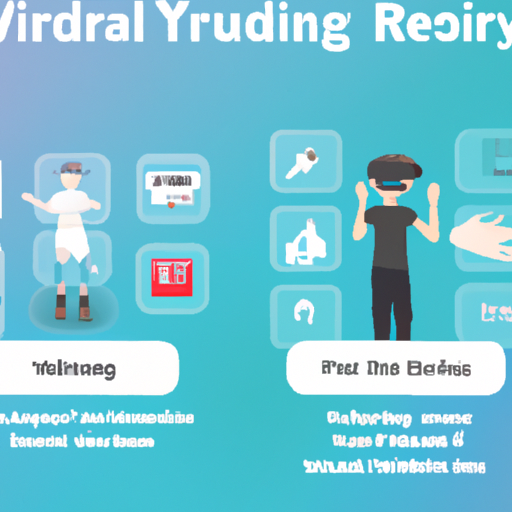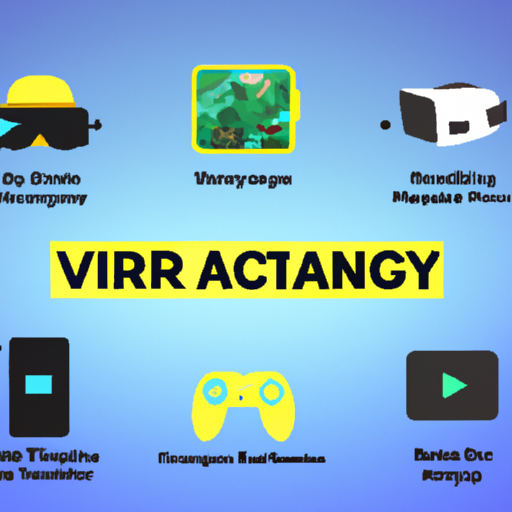-
Table of Contents
“Unlock the power of VR/AR to revolutionize education and training!”
Introduction
Virtual Reality (VR) and Augmented Reality (AR) are rapidly becoming popular tools for education and training. VR and AR provide immersive experiences that can be used to teach complex concepts, simulate real-world scenarios, and provide hands-on training. VR and AR can also be used to create engaging and interactive learning experiences that can be tailored to individual learners. With the help of VR and AR, educators and trainers can create immersive and engaging learning experiences that can help learners retain information more effectively.
The Future of Virtual and Augmented Reality in Education and Training
The use of virtual and augmented reality (VR/AR) in education and training is rapidly becoming a reality. As technology advances, the potential for VR/AR to revolutionize the way we learn and train is becoming increasingly evident.
VR/AR technology has the potential to revolutionize the way we learn and train. By immersing learners in a virtual environment, they can gain a more comprehensive understanding of the material they are studying. For example, in a medical training program, students can use VR/AR to practice medical procedures in a simulated environment. This allows them to gain a better understanding of the material and to practice their skills in a safe and controlled environment.
In addition, VR/AR technology can be used to create interactive learning experiences. For example, students can use VR/AR to explore a virtual world and interact with objects and characters. This allows them to gain a more comprehensive understanding of the material they are studying.
Finally, VR/AR technology can be used to create immersive learning experiences. For example, students can use VR/AR to explore a virtual world and interact with objects and characters. This allows them to gain a more comprehensive understanding of the material they are studying.
The potential for VR/AR to revolutionize the way we learn and train is immense. As technology advances, the possibilities for VR/AR in education and training will only continue to grow. In the near future, VR/AR technology will become an integral part of the educational and training landscape.
The Impact of Virtual Reality on Student Engagement
Virtual reality (VR) is a rapidly growing technology that has the potential to revolutionize the way students learn. VR has the potential to increase student engagement by providing an immersive and interactive learning experience. By immersing students in a virtual environment, they can interact with the material in a more meaningful way, allowing them to explore and experiment with concepts in a way that is not possible in a traditional classroom setting.
VR can also be used to create simulations of real-world scenarios, allowing students to practice and apply their knowledge in a safe and controlled environment. This can help students develop problem-solving skills and gain a deeper understanding of the material. Additionally, VR can be used to create virtual field trips, allowing students to explore places they may not be able to visit in person. This can help to make learning more engaging and exciting.
VR can also be used to create interactive games and activities that can help to keep students engaged and motivated. By providing an engaging and immersive learning experience, VR can help to keep students interested and motivated to learn. Additionally, VR can be used to create virtual classrooms, allowing students to interact with each other and their teachers in a virtual environment. This can help to create a more collaborative learning environment, which can help to increase student engagement.
Overall, virtual reality has the potential to revolutionize the way students learn. By providing an immersive and interactive learning experience, VR can help to increase student engagement and motivation. Additionally, VR can be used to create simulations and virtual field trips, allowing students to explore and experiment with concepts in a safe and controlled environment. By taking advantage of the potential of VR, educators can create an engaging and exciting learning environment that can help to increase student engagement and motivation.
How Augmented Reality is Enhancing Training and Learning
Augmented Reality (AR) is a technology that is revolutionizing the way we learn and train. It is a form of technology that overlays digital content onto the physical world, allowing users to interact with virtual objects in a real-world environment. AR has the potential to revolutionize the way we learn and train, as it provides an immersive and interactive experience that can be used to enhance the learning process.
AR can be used to create interactive learning experiences that are engaging and immersive. For example, AR can be used to create virtual simulations that allow users to interact with objects in a realistic environment. This can be used to teach complex concepts in a more engaging and interactive way. Additionally, AR can be used to create interactive tutorials that provide step-by-step instructions on how to complete tasks. This can be used to teach new skills or reinforce existing ones.
AR can also be used to create virtual classrooms that allow students to interact with each other in a virtual environment. This can be used to create a more engaging learning experience, as students can interact with each other in a more natural way. Additionally, AR can be used to create virtual field trips that allow students to explore different environments without leaving the classroom. This can be used to teach students about different cultures and environments in a more engaging way.
Finally, AR can be used to create virtual reality (VR) experiences that allow users to explore different environments in a more immersive way. This can be used to teach complex concepts in a more engaging way, as users can explore different environments and interact with objects in a realistic way.
Overall, AR is revolutionizing the way we learn and train. It provides an immersive and interactive experience that can be used to enhance the learning process. AR can be used to create interactive simulations, tutorials, virtual classrooms, and virtual reality experiences that can be used to teach complex concepts in a more engaging and interactive way.
Exploring the Benefits of Virtual Reality in Education
Virtual reality (VR) technology has been gaining traction in recent years, and its potential applications in the field of education are particularly exciting. This article will explore the various benefits of using VR in educational settings, from improved engagement to enhanced learning outcomes.
One of the primary advantages of using VR in education is that it can help to increase student engagement. VR can provide an immersive experience that can help to capture and maintain student attention. This can be especially beneficial for students who may struggle to stay focused in a traditional classroom setting. Additionally, VR can be used to create interactive learning experiences that can help to make learning more enjoyable and engaging.
Another benefit of using VR in education is that it can help to improve learning outcomes. VR can be used to create realistic simulations that can help to reinforce concepts and provide students with a better understanding of the material. Additionally, VR can be used to create virtual field trips that can help to bring the material to life and provide students with a more immersive learning experience.
Finally, VR can also be used to create virtual classrooms. This can be especially beneficial for students who may not be able to attend physical classes due to distance or other factors. Virtual classrooms can provide students with the same level of instruction and interaction as a traditional classroom setting, but without the need to physically attend class.
In conclusion, virtual reality technology has the potential to revolutionize the way we learn. By providing an immersive and engaging learning experience, VR can help to improve student engagement and learning outcomes. Additionally, virtual classrooms can provide students with the same level of instruction and interaction as a traditional classroom setting, but without the need to physically attend class. As VR technology continues to evolve, its potential applications in the field of education are sure to expand.
Conclusion
VR/AR in education and training has the potential to revolutionize the way we learn and train. It can provide immersive, interactive, and engaging experiences that can help students and trainees learn more effectively and efficiently. VR/AR can also help to reduce costs associated with traditional training methods, as well as provide a more engaging and enjoyable learning experience. With the continued development of VR/AR technology, it is likely that these technologies will become increasingly commonplace in the educational and training sectors.




